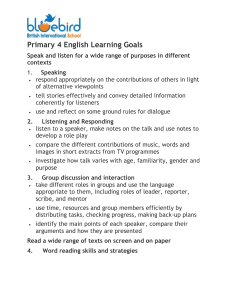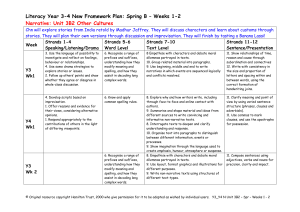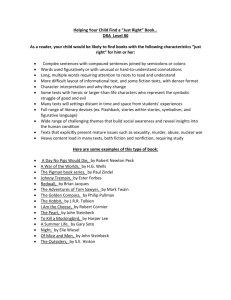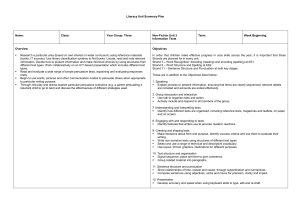Year 4 Core Learning in literacy by year
advertisement
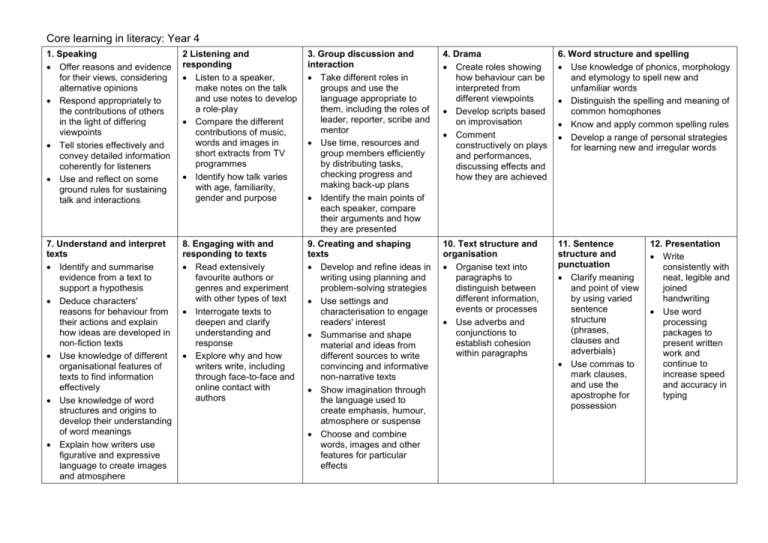
Core learning in literacy: Year 4 1. Speaking Offer reasons and evidence for their views, considering alternative opinions Respond appropriately to the contributions of others in the light of differing viewpoints Tell stories effectively and convey detailed information coherently for listeners Use and reflect on some ground rules for sustaining talk and interactions 2 Listening and responding Listen to a speaker, make notes on the talk and use notes to develop a role-play Compare the different contributions of music, words and images in short extracts from TV programmes Identify how talk varies with age, familiarity, gender and purpose 3. Group discussion and interaction Take different roles in groups and use the language appropriate to them, including the roles of leader, reporter, scribe and mentor Use time, resources and group members efficiently by distributing tasks, checking progress and making back-up plans Identify the main points of each speaker, compare their arguments and how they are presented 4. Drama Create roles showing how behaviour can be interpreted from different viewpoints Develop scripts based on improvisation Comment constructively on plays and performances, discussing effects and how they are achieved 6. Word structure and spelling Use knowledge of phonics, morphology and etymology to spell new and unfamiliar words Distinguish the spelling and meaning of common homophones Know and apply common spelling rules Develop a range of personal strategies for learning new and irregular words 7. Understand and interpret texts Identify and summarise evidence from a text to support a hypothesis Deduce characters' reasons for behaviour from their actions and explain how ideas are developed in non-fiction texts Use knowledge of different organisational features of texts to find information effectively Use knowledge of word structures and origins to develop their understanding of word meanings Explain how writers use figurative and expressive language to create images and atmosphere 8. Engaging with and responding to texts Read extensively favourite authors or genres and experiment with other types of text Interrogate texts to deepen and clarify understanding and response Explore why and how writers write, including through face-to-face and online contact with authors 9. Creating and shaping texts Develop and refine ideas in writing using planning and problem-solving strategies Use settings and characterisation to engage readers' interest Summarise and shape material and ideas from different sources to write convincing and informative non-narrative texts Show imagination through the language used to create emphasis, humour, atmosphere or suspense Choose and combine words, images and other features for particular effects 10. Text structure and organisation Organise text into paragraphs to distinguish between different information, events or processes Use adverbs and conjunctions to establish cohesion within paragraphs 11. Sentence structure and punctuation Clarify meaning and point of view by using varied sentence structure (phrases, clauses and adverbials) Use commas to mark clauses, and use the apostrophe for possession 12. Presentation Write consistently with neat, legible and joined handwriting Use word processing packages to present written work and continue to increase speed and accuracy in typing

